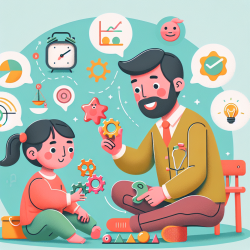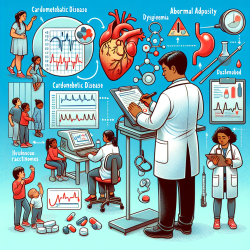Introduction
In recent years, the relationship between greenspace and human health has garnered significant attention. The umbrella review titled "Greenspace and human health: An umbrella review" by Yang et al. (2021) synthesizes existing research on the topic, providing valuable insights for practitioners in fields such as speech language pathology. This blog explores how these findings can be leveraged to improve outcomes for children receiving online therapy services.
Key Findings from the Umbrella Review
The review analyzed 40 systematic reviews and meta-analyses, highlighting the beneficial associations between greenspace exposure and various health outcomes. These include reductions in all-cause mortality, improvements in cardiovascular health, mental health, and increased physical activity. However, the evidence was inconsistent for other outcomes like cancer and respiratory diseases.
For practitioners working with children, the implications of these findings are profound. Greenspace exposure has been linked to improved mental well-being, cognitive development, and emotional regulation. These are critical areas for children, especially those receiving speech and language therapy.
Implementing Greenspace Insights in Practice
Practitioners can integrate the benefits of greenspace into their therapeutic practices in several ways:
- Virtual Greenspace Integration: Use virtual backgrounds or videos of natural environments during online therapy sessions to create a calming and engaging atmosphere.
- Encourage Outdoor Activities: Suggest activities that involve exposure to greenspaces, such as nature walks or playing in parks, as part of the therapy homework.
- Mindfulness and Relaxation: Incorporate mindfulness exercises that focus on visualizing natural settings, which can help reduce stress and improve attention.
Encouraging Further Research
While the umbrella review provides a comprehensive overview, it also highlights the need for further research, particularly longitudinal studies and those focusing on diverse populations. Practitioners are encouraged to stay informed about new findings and consider participating in research initiatives that explore the impact of greenspace on child health.
Conclusion
Incorporating greenspace insights into therapeutic practices can enhance the effectiveness of online therapy services for children. By creating environments that mimic the benefits of natural settings, practitioners can support cognitive and emotional development, ultimately leading to better health outcomes.
To read the original research paper, please follow this link: Greenspace and human health: An umbrella review.










